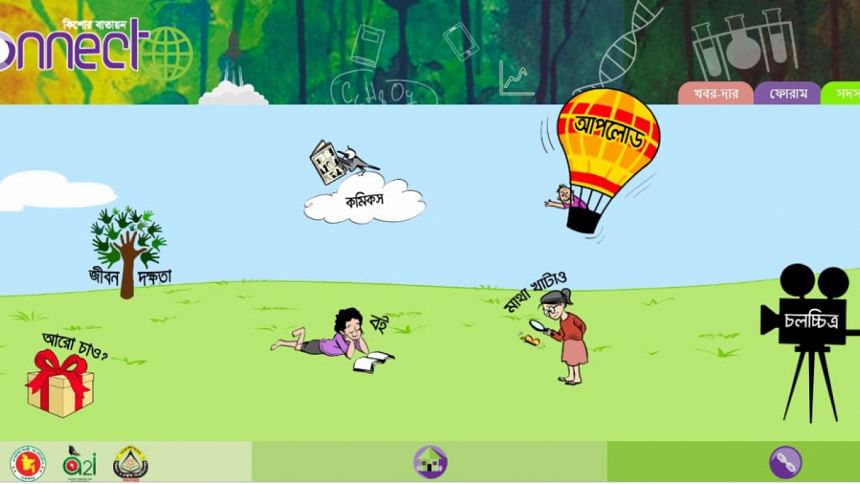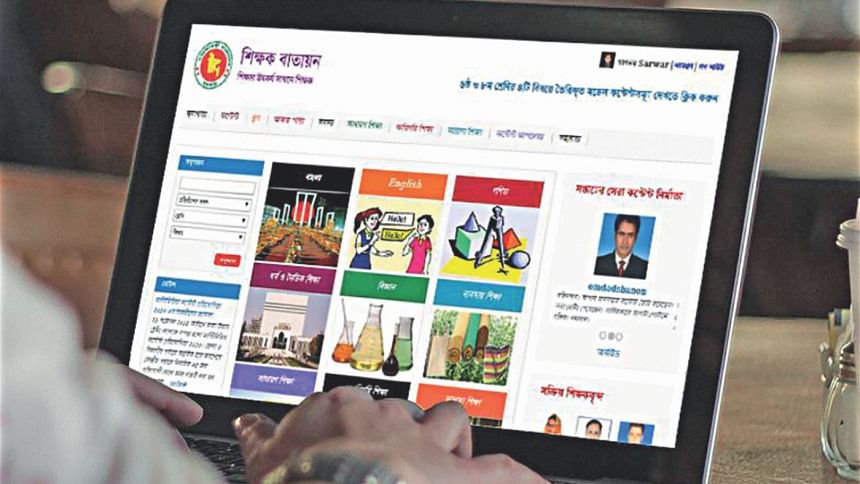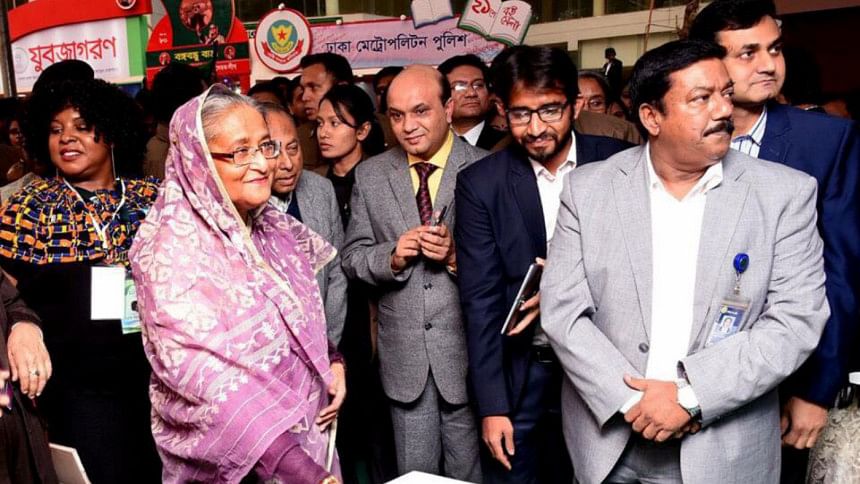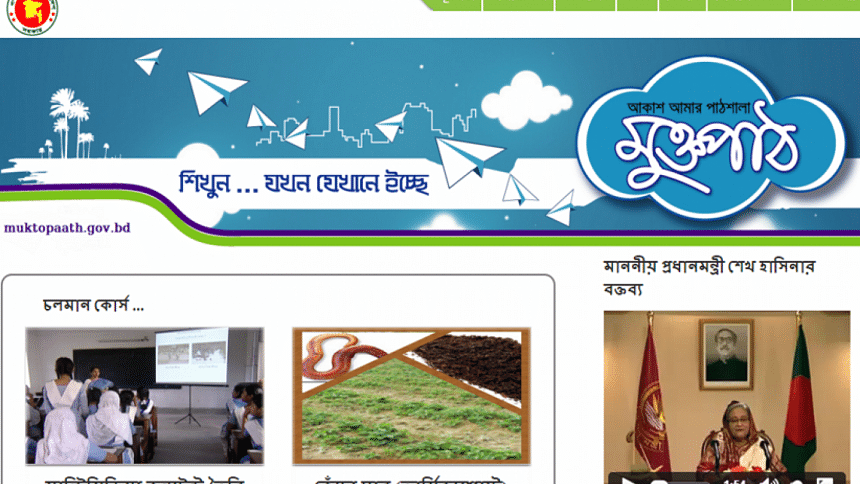Education in the age of rapid technological advances

It is quite impossible to ignore the presence of the Internet and its related electronic devices in our day to day life. The age of Internet users is as young as 3 years old. At present, nearly all toddlers have their allocated media time consisting of a few minutes or hours with mobile phones or tabs every day. The purpose is to feed them, keep them quite or provide them with unique knowledge subconsciously, while they are concentrating or entertaining themselves using these gadgets.
In fact, it is not a matter of upper or lower class anymore. Everyone is connected to the Internet to some extent. Despite the positive and negative effects, as the 3rd generation technology succession reached this level, it is quite inevitable that embracing the fusion of technologies is just a matter of time. Embarking on the Fourth Industrial Revolution (4IR), technology and market leaders are already forecasting what will be the future trends. These include massive job losses due to automation, 10 percent clothes and spectacles being connected to the internet, mobile phone implants in the human body, 90 percent of people to have unlimited free cloud storage, 10 percent cars to be driverless, cities without traffic lights, 3d printed cars, 3d printed organs, etc. While these dreams are becoming reality, the choice is on us; either we could whimsically wait for this amazing future to happen and see who leads the world, or it is for us to claim a stake to lead the world together.
By choice, with unprecedented effort over the last ten years, Bangladesh has reached developing country status. By 2041, we will become a developed country. But the question is “who will lead that?” The only answer we can come up with is that it will be the young, intellectual, fresh minds of today. Being busy with so-called examinations and numbers throughout the year, teachers and educators seldom know what opportunities and disruptions are waiting for our students. So global leaders are searching for the answer of what our future learners should look like. What vital skills our learners should acquire from school. What should be the future assessment model that will not cover the cognitive level only, but also other major aspects of human development?
In the quest for this answer, last year Access to Information (a2i) Programme organised a few workshops bringing education experts from ministries, directorates, NCTB, TTC, teachers, academician, technologists, futurists, designers, journalists, development partners and students together to discuss “Future Education”. Experts have opined that a future learner should have attributes of “Being a Solution”. A learner will be a solution in her personal, community and global life. To be a solution he/she should have major 8 characteristics of behaviour that can be expressed in short as “6CAP”. That indicates a learner will be Creative, Critical Thinker/Problem Solver, Collaborative, Communicative, Change Maker, Citizen (active and global), Adaptive and Productive. Besides, having subject knowledge and occupational training a learner should have 6CAP characteristics that will help him/her to adjust in a new situation and lead the country with others.

To ensure these characteristics in a learner, the teaching learning process, environment, resource, teacher, assessment and overall curriculum must be reshaped. More precisely we need to focus on three most prioritised courses of action which are formative assessment along with interactive teaching learning method, self-motivated and well-trained teachers, and visionary educational leaders to ensure quality education.
Today's educators are focusing more and more on formative assessment (FA) and it is imperative to implement FA in classroom learning. Formative assessment is a continuous evaluation process that helps teachers to teach better and learners to learn better. Various FA tools can be used in the classroom locally and globally such as Think-Pair-Share, Daring Doodles, Roll the Die, Quick summaries, Round Robin Charts, Talk Show Panel, Interview etc. Many more interactive FA tools can be practiced within classroom hour. Besides, formative assessment requires a new set of teaching learning method (TLM).
One very good example of TLM is Project Based Leaning (PBL). PBL is a powerful learning process that boosts learner's critical thinking, problem solving, and communication and collaboration skills simultaneously. It takes learners on a cool and extraordinary journey of creativity, exploration that are relevant to the real world. To
ensure these FA, PBL and other interactive methods within the classroom we need quality teachers.

This does not mean that they have to be super geniuses, subject specialists or a first-class graduate, rather it refers to people who love teaching, know how to engage learners, how to unleash their inner potentiality with quality test and feedback, how to prepare young people for the future by embedding them with curiosity and life-long learning behaviours. Finally, to ensure FA, TLM, PBL, quality teachers and other green and clean school environment, there's a tremendous need for visionary leaders in every school.
In the context of Bangladesh, a big size classroom consists of a 1:50 teacher-student ratio, de-motivated teachers due to lack of career paths and recognition, traditional grading systems and politically or whimsically placed head teachers and school managing committee. Millions of dollars have already been invested in the traditional way to resolve these long bearing problems, but very little evidence has been generated to showcase a satisfactory quality result.
Because of this failed approach, we need a new set of technology and evidence based sustainable solution to ensure better education. In the last decade, few such judicious interventions of technology promised better opportunity. Let us look at those examples one by one.
Starting from 2010, piloting with 410 schools with technical support from a2i, the Ministry of Education has now established 23,333 multimedia classrooms in secondary schools and Madrasas. Furthermore, schools have included another 7,000-plus more MMC by their own means. Now, almost 100 percent secondary schools have at least one multimedia classroom. Also, the Ministry of Primary and Mass Education has established 15,000 MMC in primary schools. Gradually all schools will be brought under MMC initiative. Multimedia classroom comprises of one projector, one laptop, a set of speakers with internet package at least for one year. Main objective of this MMC is to leverage cognitive attainment of learners using up to date knowledge, examples and audio-visual contents. The traditional teaching-learning materials could now be complemented with multimedia (i.e. audio-video) content developed by teachers both at home and abroad. This integration of ICT has enabled teachers and students to conceptualise ideas and broaden their cognitive abilities through this visualisation process.
MMC is largely supported with a training programmes called Teacher-led Digital Content Development (TLCD). For the first time teachers have been assigned to develop digital content by their own capacity and use those contents in MMC. It is a 12-day long ICT in Education training programme that covers both ICT and pedagogic skills. The manual, teachers guide and Training of Trainers (ToT) programme was conducted by a2i. Then Ministry of Education (MoE) and Ministry of Primary and Mass Education (MoPME) have taken large projects to train all teachers. At this moment, about 250,000 primary and secondary teachers have been trained on TLCD. All those trained teachers now can access the internet, find out the appropriate information, images and videos, edit or customize resources and can combine collected information in a power-point presentation which is called content. Now every teacher is able to develop their own content.
But developing quality content is not easy. It requires time, effort and money. So it is quite impossible for a teacher to develop all the content by themselves but it is possible to add a few of their developed contents into a platform where thousands of teachers add quality contents and share these contents with each other.

In this backdrop, the largest state-owned online educational content repository and professional development platform is being developed and named “Teachers Portal” (www.teachers.gov.bd). Launched on May 16, 2013 by there are above 344,000 teachers and 150,000 audio-visual contents available in this portal and all those contents can be accessed for free. Teachers Portal wraps together access to quality content, peer-mentoring, self-paced learning through practice, peer-collaboration, and motivation through healthy competition. The portal aims to achieve long-term engagement of teachers by offering both intrinsic and extrinsic forms of human motivation. Teachers feel intrinsically motivated from greater skills and professional development due to association, content sharing and mentoring with thousands of teachers across the country. Teachers derive extrinsic motivation from external, tangible rewards like “best-teacher competitions” and “best teacher of the week awards” that are held and awarded through the portal.
A good requires good training. Not just need based but regular different dimensional training for continuous professional development. But in a densely populated country like Bangladesh with one million teachers, it is impossible to reach all of them with the traditional face to face training model. Keeping that in mind, a2i came up with a solution called Muktopaath (www.muktopaath.gov.bd), an
e-learning platform that has connected 118,000 learners of diverse target audience including teachers, students, unemployed youths, women, farmers, migrating workers, government employees and other professionals in 22 courses so far.
Every year MuktoPaath has the potential to train 600,000 migrant workers, 150,000 newcomer journalists on the basics of journalism, 350,000 primary school teachers and 400,000 secondary and high school teachers, trainers and education officers on different subjects, and more than 10 million unemployed youth with different skills. “Muktopaath” has been given the most prestigious ICT award in the world called WSIS in 2018. It has also gained The Sohel Samad Memorial Award in 2018 given by the Press Institute of Bangladesh.
One major priority of quality education under SDG-4 is inclusiveness and equity, creating equal opportunity for each learner. There are around 50,000
children in Bangladesh who are visually impaired or completely blind. But they also deserve quality education. In the election manifesto of the present government, learning opportunities for differently abled children has been prioritised. Considering this, the prime minister handed over digital textbooks of primary level and braille books to visually impaired students for the first time in the inaugural session of free book distribution ceremony in December 2014.
Subsequently, 9,152 Braille books on 111 subjects of class 1 to class 12 have been distributed to the visually impaired students on the first day of the school calendar by NCTB with the technical support of a2i. These books can be used with AMIS software or DD Reader. Moreover, Braille books can be printed easily with this software.

On February 1, 2018 another historically important event took place in the ICT education of Bangladesh with the inauguration of “Konnect” (www.konnect.edu.bd) an adolescent's portal. Another milestone inaugurated by Prime Minister Sheikh Hasina which is a dedicated platform for young minds jointly developed by Shahjalal Science and Technology University (SUST) and a2i. Here “Konnect” stands for connecting adolescents to enhance their creativity, nourishing their talents and create healthy environment for cyber entertainment. Adolescents aged 13 to 18 years old are eligible to be the members of Konnect. Right now above 280‚000 students are logged in as a user. Konnect is a platform offering wide range of edutainment contents created by different partner organisations as well as crowd sourced by learners. Konnect will enrich young minds with extra-curricular books, films, fun experiments, comics and games that promote healthy usage of internet.
Besides all these interventions, other remarkable initiatives also took place. Such as- Accessible Dictionary: accessing four major dictionaries of Bangla Academy online for free; Hater Muthoy Biggan: a science textbook based audio-visual material; Bigganer Rajjye: A mobile based science popularising game for children and low-cost science instructional materials for grade 6-10 have been developed. A few multimedia teaching learning materials have also been developed by Save the Children at the primary level, BRAC and SESIP project of MoE in secondary education. This is how the quality education of Bangladesh have been leveraged with the help of ICT.
Nevertheless, these initiatives are just a few drops in the ocean. To prepare above 40 million school aged children with market ready knowledge and skills requires much more purposeful and planned state action. Zero tolerance against educational corruption is only possible with technological transformation of traditional paperwork. Starting from school to ministry, all the activities need to be handled without paper. When we talk about AI, 3D printing, Internet of Things and other revolutionary technologies, we are basically talking about big data. We have to properly store, manage and use big data across many disciplines like health, environment, socio-economic and transportation to take better educational plan and action.
We have to use augmented and virtual reality contents to give learners a comprehensive knowledge. Future literacy is about coding literacy. Each of our learners need to know programming or computing language to become more effective creators and consumers of digital media. Thus, we need to not only add a few paragraphs in textbook, but cover a wide range of practical works, activities, hackathon, network programming, competitions and national and international coding needs to be included in the national campaign. We have to design, develop and incorporate technologies to monitor learners' individual performance trends and give real time and live feedback. A large number of teaching learning and professional development courses need to be developed with global partners so that our teachers can teach globally and even learn globally. The Fourth Industrial Revolution is not about machines deciding the future, it will be about us deciding how machines will act as a multiplier for our future happiness.
Mohammed Rafiqul Islam is Educational Technology Expert at a2i programme.
E-mail: [email protected]

 For all latest news, follow The Daily Star's Google News channel.
For all latest news, follow The Daily Star's Google News channel. 



Comments